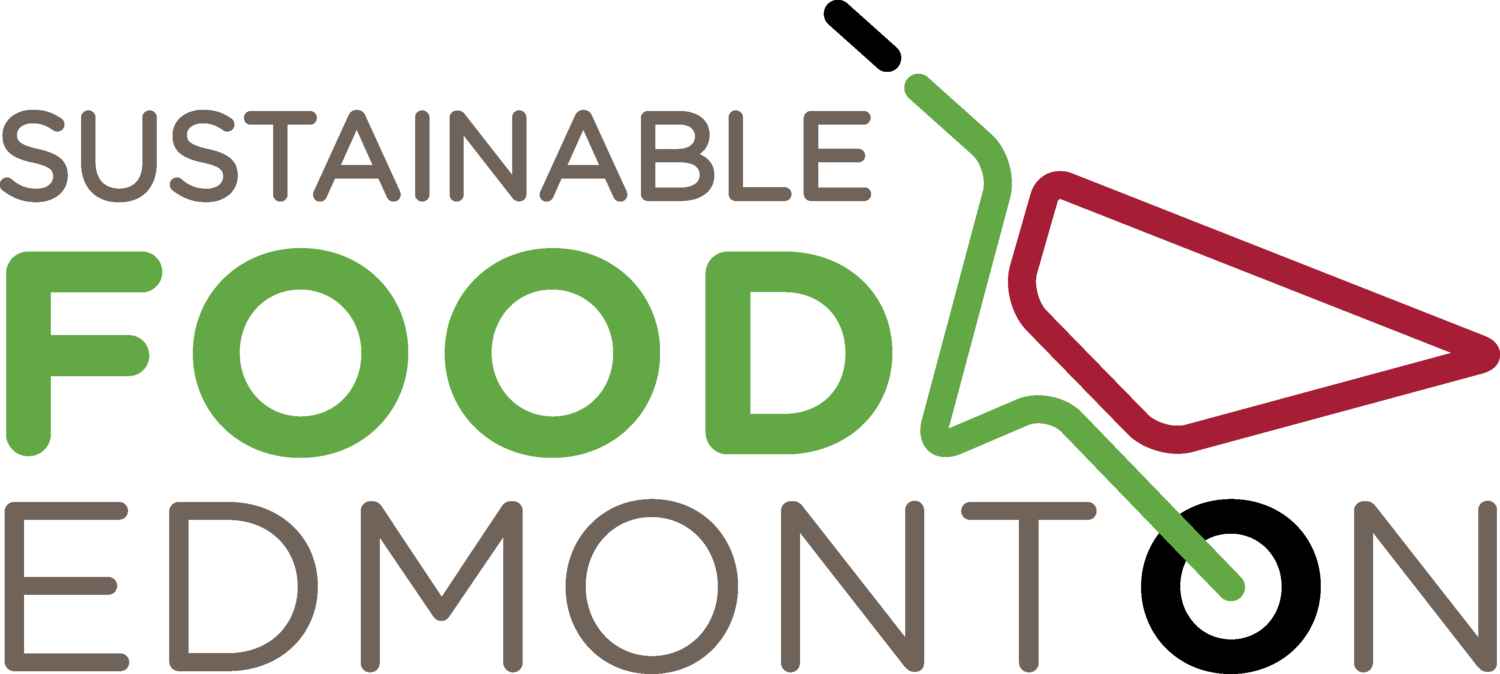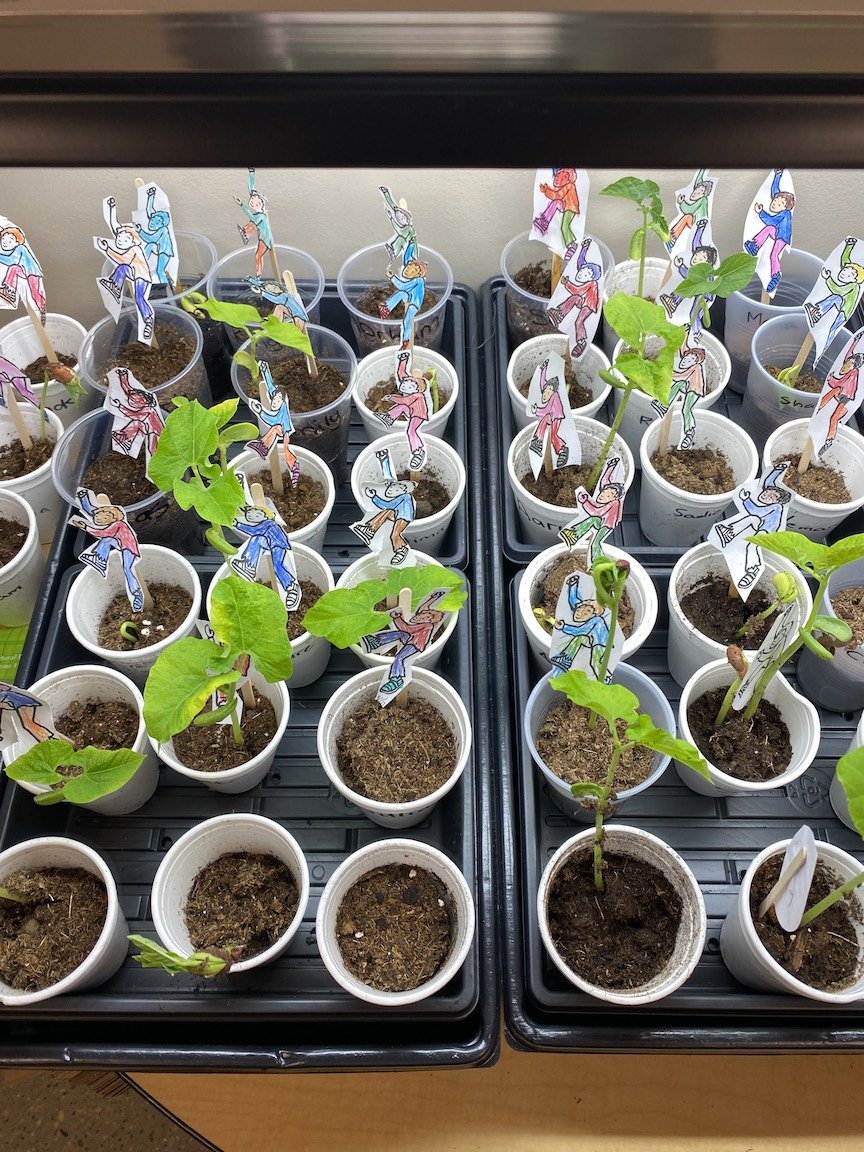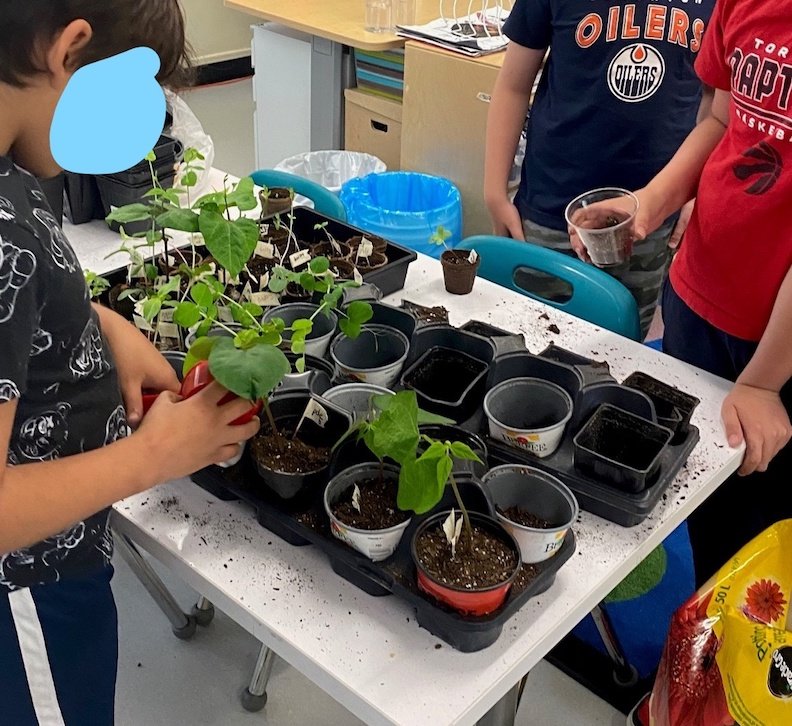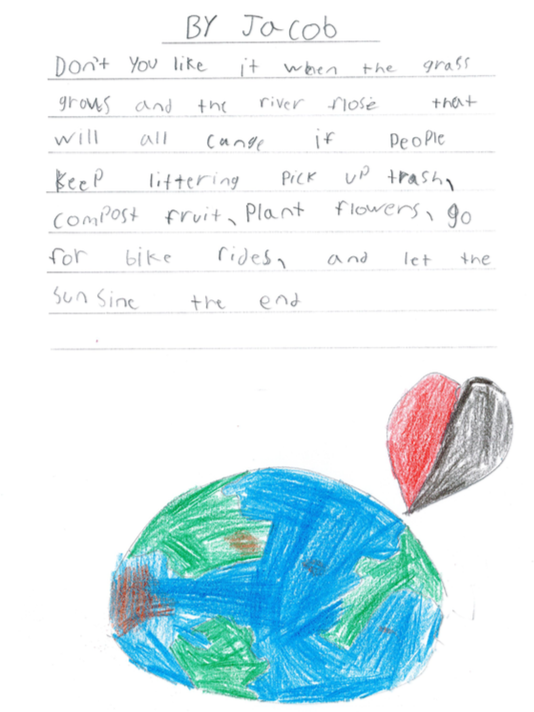We had another great indoor gardening year in more than 60 classrooms! After some challenges during the pandemic, most teachers in our Little Green Thumbs and Little Green Sprouts programs engaged their students in some kind of gardening experience.
Growing a classroom garden adds more time to the busy schedule of teachers. However, we do hope that this wonderful comment from Jenna Van Herk at St. Timothy School shows the reward:
“I am happier to come to work.”
Here is a snap shot of our gardening year:
Little Green Sprouts teacher Ms Seal at Hilwie Hamdon School reported that most children enjoyed pea sprouts: “They said it was sweet, crunchy, and they looked like long lettuce!” The students also made a face using veggies and they pretended to be Easter bunnies.
At Delton School, the sprout light was also used to start veggie and flower plants for an outdoor garden, and some children took plants home. Ms Fournier indicated that some students “really latched onto the classroom garden and were very invested in its care and maintenance.” That’s really great – maybe a lifelong passion for gardening has sprouted here.
The larger Little Green Thumbs garden takes up more space and in return produces fully grown veggies, such as beans, cherry tomatoes, peppers, kale, Swiss chard, herbs and cucumbers. The students and teachers have the dilemma of choice, otherwise the garden is overcrowded. As the garden grows and changes, the students have a chance to observe, record, taste test and share their knowledge.
For example, at St. Francis Xavier School, Ms Bolton reports: “...it brings up great discussions almost every day and it is unbelievable that so many students don't know about seeds, seedlings, fertilizer, etc. I have students that I have never taught coming to ask questions about growing a garden and germinating seeds, and even taking pictures of the garden!”
At Major General Griesbach, Ms Perry indicates that “Being on our "botanist" team was a super popular job and students learned in an authentic way the different needs of different plants.”
We love getting news of harvest events, salad parties and kids discovering they love eating the veggies they have grown. Here are just a few of the comments we have received:
I have had sooo many cucumbers! I did not know they needed to be picked when they were smaller. That's why some have been bitter!
We’ve had a salad and bean party! It was sooo yummy!
We have eaten and shared 4 large cucumbers so far and this is a picture of 2 out of our 11 peppers that are eaten, shared or still in our garden. And we will get ripe tomatoes before the end of the year! The kids just love eating and sharing the produce they grew and cared for!
Look at the beautiful flowers! How do those turn into food?
Teachers report many benefits of having a garden for their students, including “taking a look at the garden when needing a brain break” or the garden “...provided quiet moments of pride and happy moments of excitement! It was also an area where students were able to relax and find a quiet spot to think and regulate.” As this is a group project, “Students needed to work together to make a garden plan and choose the seeds. It was good for getting students to collaborate. It is hard for many of our students to take perspective, so this project was a great help.”
At St. Martin School, the influx of children from Ukraine meant that the grow light did not fit and some classes used the boxes, soil and seeds to grow near a window. Once the weather allowed, the seedlings were planted into the outdoor school garden. Fortunately, extra space has been found to set up the indoor garden for next year.
Our year again included several presentations to help students make connections to the lives of farmers and food growers. We had excellent speakers and an estimated 1240 students attended virtual presentations. As in previous years, Kirk and Trudy Harrold, Charlotte with Chatsworth Farm, and Patty Milligan with Edmonton Urban Farm gave insight into farming, bees and pollinators. A few classes were selected for an in-person visit from storyteller Ms Klassen who shared seeds from the St. Albert Seed Library.
New this year was a wonderful opportunity to learn from Jennifer with Riverside Farm about her sheep farm in BC. Her family’s flock produces wool, meat and wool pellets; a source of fertilizer for gardens.
Also new and much appreciated was Andrew’s talk about Rosy Farms, his berry farm where families can pick haskap berries. This fruit has three times the anti-oxidant properties of blueberries and the plants thrive in our cold climate. Andrew is also very passionate about regenerative farming, wanting to create healthy soils teeming with microorganisms. He works hard to ensure his land is home to a huge diversity of wildlife, insect and bird species.
We concluded our year with the Little Green Thumbs Kids Garden Contest. We received wonderful drawings, photos and poetry of how children want to take care of the land around them.
We can’t wait to convene as an indoor gardening community again next fall and winter!



















